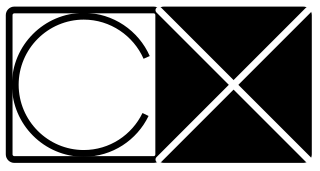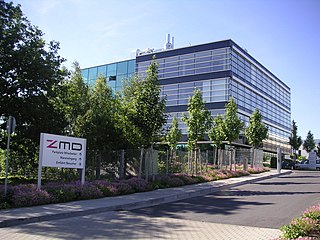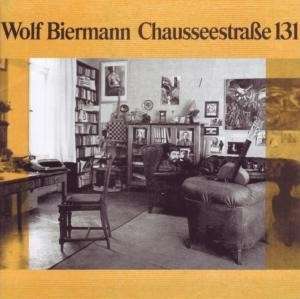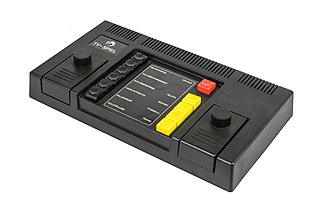Related Research Articles

A phonograph record, a vinyl record, or simply a record or vinyl is an analog sound storage medium in the form of a flat disc with an inscribed, modulated spiral groove. The groove usually starts near the periphery and ends near the center of the disc. For about half a century, the discs were commonly made from shellac, with earlier records having a fine abrasive filler mixed in. Starting in the 1940s, polyvinyl chloride became common, the "vinyl records" of the late 20th century.
Noise reduction is the process of removing noise from a signal. Noise reduction techniques exist for audio and images. Noise reduction algorithms may distort the signal to some degree. Noise rejection is the ability of a circuit to isolate an undesired signal component from the desired signal component, as with common-mode rejection ratio.

Amiga is a popular music record label in Germany. Once an organ of the East German state-owned music publisher VEB Deutsche Schallplatten, Amiga became a label of the Bertelsmann Music Group in 1994.

The Publicly Owned Enterprise was the main legal form of industrial enterprise in East Germany. These state-owned enterprise were all publicly owned and were formed after mass nationalisation between 1945 and the early 1960s, and the handing back in 1954 of some 33 enterprises previously taken by the Soviet Union as reparations.

CX is a noise reduction system for recorded analog audio. It was developed by CBS Laboratories in the late 1970s as a low-cost competitor to other noise reduction (NR) systems such as dbx disc and High-Com II, and was officially introduced in 1981. The name CX was derived from "Compatible eXpansion", a feature of the technique.

Zentrum Mikroelektronik Dresden (ZMD) was regarded as the heart of East Germany's microelectronics research in the 1980s as well as its most advanced integrated circuit manufacturer. Together with TU Dresden and VEB Spurenmetalle Freiberg, ZMD formed the foundation for Silicon Saxony, a cluster of microelectronics companies that came to include new fabs by Siemens and AMD.

The Bläck Fööss are a music group from Cologne, Germany, started in 1970. From 1973 to 2003 Werner Dies was producer of the music group.

The U880 is an 8-bit microprocessor that was manufactured by VEB Mikroelektronik "Karl Marx" Erfurt in the German Democratic Republic. Production of the U880 started in 1980 at VEB Funkwerk Erfurt. The U880 is an unlicensed clone of the Zilog Z80 microprocessor, also supporting illegal opcodes and bugs, except for very minor differences like not setting the CY flag for the OUTI command.

The Robotron KC 87, fully known as Kleincomputer robotron KC 87, was an 8-bit microcomputer released in 1987 and produced in East Germany by VEB Robotron-Meßelektronik "Otto Schön" Dresden, part of Kombinat Robotron.

Waldangelbach is a river of Baden-Württemberg, Germany. It flows into the Leimbach in Wiesloch.
The High Com noise reduction system was developed by Telefunken, Germany, in the 1970s as a high quality high compression analogue compander for audio recordings.

Chausseestraße 131 is the second LP recorded by East German Liedermacher and poet Wolf Biermann, after Wolf Biermann (Ost) zu Gast bei Wolfgang Neuss (West), an album recorded together with Wolfgang Neuss. It was his first album released after the Socialist Unity Party officially blacklisted him from performing or releasing music through the East German music monopoly VEB Deutsche Schallplatten. Due to being blacklisted, Biermann was unable to use a professional recording studio to record the album, forcing him to record in his apartment at Chausseestraße 131 using a Grundig tape recorder and a Sennheiser omnidirectional microphone smuggled in from West Germany. Because of this, the sound of traffic outside his apartment can be heard in the background.

Helmut Müller-Enbergs is a German political scientist who has written extensively on the Stasi and related aspects of the German Democratic Republic's history.

The Wiesloch Feldbahn and Industrial Museum is a narrow-gauge railway and industrial heritage open-air museum established in 2001, at Wiesloch, Germany. The museum is centred around the former locomotive shed of the Tonwaren-Industrie Wiesloch (TIW) brickworks, and houses industrial equipment from large excavators to small machine tools, plus large and small locomotives.
The Verlag Harri Deutsch with headquarters in Frankfurt am Main, Germany, as well as in Zürich and Thun, Switzerland, was a German publishing house founded in 1961 and closed in 2013.

Helmut Alfons Schlegel is a German Franciscan, Catholic priest, meditation instructor, author, librettist and songwriter. He is known for writing new spiritual songs, set to music by various composers.

Tonwaren-Industrie Wiesloch was a brickworks making which existed in Wiesloch, Germany between 1895 and 1989. It was one of the largest and most significant factories in Germany. The factory was located just north of Wiesloch-Walldorf station and was the largest employer in Wiesloch.

VEB Kombinat Mikroelektronik Erfurt was an important manufacturer of active electronic components in East Germany. It should not be confused with the more well-known VEB Kombinat Robotron Dresden which used integrated circuits from Kombinat Mikroelektronik in its computers.

The Bildschirmspiel 01 is the only game console that was developed and manufactured in the German Democratic Republic (GDR). It is based on the integrated circuit AY-3-8500 by General Instrument. The gameplay, controls and audiovisual presentation of the four individually selectable games are similar to Pong. The BSS 01 was designed and produced by VEB Halbleiterwerk Frankfurt an der Oder (HFO). Its sales were started in 1979 under the RFT brand at a price of 550 East German marks. Due to a lack of profitability, production was discontinued after just two years. A successor device with more game options and additional colored image output did not pass the prototype stage.
DYNAS is a dynamic analog filtering and tuning technology to improve the reception of FM radio broadcasts under adverse conditions.
References
- 1 2 3 4 5 6 7 8 9 10 11 12 13 Hohmuth, Gerhard (May 1987). "Verbesserte Schallplattenwiedergabe durch UC-Kompressor". radio fernsehen elektronik (rfe) (in German). Vol. 36, no. 5. Berlin, Germany: VEB Verlag Technik . pp. 311–313. ISSN 0033-7900. Lizenz-Nr. 1109. AN (EDV) 67 816. (3 pages) (NB. Includes a description of the UC compander system.)
- 1 2 3 4 5 6 7 8 9 10 11 12 13 14 Milde, Helmut (September 1987). Written at Dresden, Germany. "Das UC-Kompandersystem" (PDF). radio fernsehen elektronik (rfe) (in German). Vol. 36, no. 9. Berlin, Germany: VEB Verlag Technik . pp. 592–595. ISSN 0033-7900. Archived (PDF) from the original on 2021-05-05. Retrieved 2021-05-05. (4 pages) (NB. Includes a detailed description of the UC system characteristics and a reference schematic developed by Milde, similar to the circuitry used in the Ziphona HMK-PA2223. Equivalent semiconductors: B082 (2× BiFET OPA) → TL082; B084 (4× BiFET OPA) → TL084; A274 → TCA740; SC309 (80 V / 100 mA / 200 mW / >120 MHz / low-noise) → BC239/BC309 (also SCE309 (80 V / 100 mA / 200 mW / >120 MHz / low-noise) → BC849/BC859); B340D (array of 4× small-signal Si-NPN transistors) → ?; SAM45 (diode array with common cathode, 20 mA / 15 V / 300 mW / <65 ns) → 5× 1N4148 or similar; SAY30 (30 mA / 25 V / 150 mW / <65 ns) → 1N4148 or similar.)
- 1 2 3 4 Schwenke, Paul; Leyh, Georg; Vorstius, Joris, eds. (1990). "(unknown)". Zentralblatt für Bibliothekswesen (in German). Bibliographisches Institut. 104: 415. ISSN 0044-4081. p. 415:
[…] mit einem sogenannten UC-Kompander (Abk. für Universal Compatible; Kompander = Zusammenfassung aus Kompressor und Expander) bearbeitet. Die im Original zu große Dynamik (d.h. das Verhältnis zwischen lautester und leisester Stelle der Aufnahme muß durch einen technischen Bearbeitungsvorgang verringert werden, damit die leisen Passagen nicht im Plattenrauschen untergehen. Dieser in jedem Fall durchgeführte Vorgang wird vom UC-Kompressor nach speziellen, genau definierten Vorschriften nahezu unhörbar vorgenommen. Wenn das Wiedergabegerät mit einem UC-Expander ausgerüstet ist, kann die Originaldynamik annähernd wiederhergestellt werden, indem der Bearbeitungsvorgang rückgängig gemacht wird. Hieraus resultiert eine Rauschminderung der Wiedergabe. […]
{{cite journal}}: Cite uses generic title (help) - 1 2 3 4 5 6 7 8 9 Wonneberg, Frank [in German] (April 2000). Vinyl Lexikon - Wahrheit und Legende der Schallplatte - Fachbegriffe, Sammlerlatein und Praxistips (in German) (1 ed.). Berlin, Germany: Lexikon Imprint Verlag. pp. 169–170, 405 [170, 405]. ISBN 3-89602-226-1. ISBN 978-3-89602-226-4. p. 405:
UC […] Vom VEB Deutsche Schallplatten und dem ZWT Rundfunk und Fernsehen der DDR entwickelter, breitbandiger Kompander zur Codierung von Schallplatten. Das UC-Kompandersystem (universal compatible) nutzt die Möglichkeit durch den Einsatz sogenannter Logarithmierer, den Verstärkungsvorgang fließend zu gestalten und ein abruptes Umschalten bei niedrigen Signalpegeln zu vermeiden. Durch einen sich kontinuierlich wandelnden Kompressionsgrad von 5:3 (0 dB) bis 1:1 (−20 dB) erzielt man eine effektive Störunterdrückung von 10 dB. Die Expansion erfolgt spiegelverkehrt. Auch ohne den Einsatz eines entsprechenden UC-Expanders bleiben durch das »fließende« Verfahren die Ein- und Ausklingvorgänge in ihrer Homogenität und auch die Raumabbildung der Tonaufzeichnung weitestgehend erhalten. Die gewinnbringende Nutzung des UC-Kompanderverfahrens stellt den Anwender vor ein kaum lösbares Problem, da die ökonomischen Rahmenbedingungen und die zentrale Planung der Geräteentwicklung in der DDR die Herstellung eines Serienproduktes untergruben. Letztlich existieren nur einige Labormuster in den Händen der an dem Verfahren beteiligten Entwickler. Ein Versuch nach 1990, mit dem Verfahren erneut Fuß zu fassen, scheiterte an der international bereits von der Industrie vollzogenen, umfassenden Digitalisierung der Heimwiedergabe. Vom VEB Deutsche Schallplatten wurden in den Jahren 1983 bis 1990 weit mehr als 500 verschiedene UC-codierte Schallplatten der Marken Eterna und Amiga veröffentlicht. Alle entsprechend aufgezeichneten Schallplatten tragen im Spiegel der Auslaufrille zusätzlich zur Matrizengravur ein U. Auf eine äußere, gut sichtbare Kennzeichnung wurde, im Sinne der hervorragenden Kompatibilität des Verfahrens bei einer konventionellen Wiedergabe und in Ermangelung verfügbarer UC-Expander für den Heimgebrauch, verzichtet.
(448 pages) - 1 2 3 4 5 6 Müller, Claus (2018) [2017]. "UC-Expander" (in German). Archived from the original on 2021-05-05. Retrieved 2021-05-05. p. 4:
[…] In den 1980er Jahren wurden in der DDR vom VEB Deutsche Schallplatten unter dem Label ETERNA viele sehr gute Aufnahmen klassischer Musik veröffentlicht. Diese Platten wurden, nicht wie sonst üblich, in Lackfolie sondern direkt in eine Metallscheibe geschnitten (DMM - Direkt Metal Mastering). Das ersparte zwei Zwischenkopien im Produktionsablauf, was nicht nur schneller ging, sondern auch zu einer erheblich besseren Qualität führte. Zur weiteren Steigerung der Klangqualität wurde das UC-Kompandersystem (UC - Universal Compatible) eingesetzt. Damit wurden beim Schneiden der Platte die leisen Töne etwas lauter und die lauten entsprechend leiser überspielt. Wendet man bei der Wiedergabe das umgekehrte Verfahren an, werden mit den leisen Tönen auch die Störungen abgeschwächt und die lauten Stellen verzerren nicht und nutzen sich weniger ab. All das geschah so vorsichtig, dass man die Platte auch ohne Expander bei der Wiedergabe noch genussvoll anhören konnte. Zum Glück, denn es hätte sowieso nur einen Plattenspieler gegeben, der über eine entsprechende Schaltung verfügte und der war sehr teuer. Vermutlich aus diesem Grund hat man auf eine weithin sichtbare Kennzeichnung der mit diesem Verfahren aufgenommenen Platten verzichtet. Nur in der Gravur zwischen den Auslaufrillen kann man am angehängten U den Einsatz des Kompressors erkennen […] Das vorliegende Programm erfüllt die Aufgabe eines UC-Expanders, mit dem Sie eine im wav-format digitalisierte Schallplattenaufnahme bearbeiten können, um nun endlich den Klang genießen zu können, den Sie damals erworben haben. Bis dahin gibt es aber noch eine Schwierigkeit. Zur richtigen Einstellung des Programmes benötigen Sie eine Schallplatte, auf der ein Bezugspegelton aufgezeichnet ist, wie das bei den, dem Plattenspieler beiliegenen, Testplatten der Fall war. […]
(NB. Describes a software implementation of an UC expander as a program "UCExpander.exe" for Microsoft Windows. Also shows a picture of the "U" engraving in the silent inner groove of a record indicating a UC encoded vinyl disk.) - 1 2 3 Seiffert, Michael; Renz, Martin, eds. (2013-02-24) [2013-02-22]. "Ziphona HMK-PA2223". Hifi-Museum (in German). Archived from the original on 2021-05-06. Retrieved 2021-05-06. (NB. Has pictures of a VEB Phonotechnik Pirna/Zittau Ziphona HMK-PA2223, a tangential arm direct drive turntable with built-in UC expander, with the frontpanel showing a "UC" logo (for "Universal Compander").)
- ↑ Hohmuth, Gerhard (August 1984). "Dynamik in elektroakustischen Übertragungssystemen". radio fernsehen elektronik (rfe) (in German). Vol. 33, no. 8. Berlin, Germany: VEB Verlag Technik . pp. 515–516, 538. ISSN 0033-7900.
- 1 2 3 4 Milde, Helmut (1988). "Der UC-Kompander - Ein Kompandersystem zur Dynamikanpassung und Rauschverminderung bei der Schallplattenübertragung" [The UC Compander - A Compander System for Volume Matching and Noise Reduction in Gramophone Record Transmission]. Bild und Ton - Wissenschaftliche Zeitschrift für visuelle und auditive Medien (in German). Vol. 41, no. 3. Leipzig, Germany: VEB Fotokinoverlag . pp. 88, 89–93, 95–96 [89–93]. ISSN 0006-2383. OCLC 631727755. CODEN BITOA. (NB. Includes a detailed description of the UC system characteristics and a reference schematic developed by Milde; see also: Milde (1987).)
- ↑ Zander, Horst (2009). PC-gestützte Restaurierung von Audiosignalen (in German) (1 ed.). Fachverlag Schiele & Schön . p. 176. ISBN 978-3-79490778-6. ISBN 978-3-79490778-6. Archived from the original on 2021-05-08. Retrieved 2021-05-07. p. 176:
[…] UC aus der ehemaligen DDR. […] Das UC-System gleicht im Arbeitsprinzip dem CX-System, denn es hatte die gleiche Zielsetzung: eine Verbesserung des Dynamikbereichs bei der Schallplatte. […]
- ↑ Ahnert, Wolfgang; Steffen, Frank (2000). "5.2.3 Dynamic range". Sound Reinforcement Engineering: Fundamentals and Practice (illustrated ed.). CRC Press. pp. 176–179 [178: Table 5.2]. ISBN 0-41523870-6. ISBN 978-0-41523870-0 . Retrieved 2021-05-06. p. 178:
[…] Gramophone record 40–50 dB […] Gramophone record with compander (CX, UC) 50–60 dB […]
- ↑ Reuber, Claus (March 1983). "Hörfunk in Zukunft - Erst High-Com, dann digital" (PDF). Aktuelle Grundsatzfragen. Funk-Technik - Fachzeitschrift für Funk-Elektroniker und Radio-Fernseh-Techniker - Offizielles Mitteilungsblatt der Bundesfachgruppe Radio- und Fernsehtechnik (in German). Vol. 38, no. 3. Heidelberg, Germany: Dr. Alfred Hüthig Verlag GmbH . pp. 98–100 [98–99]. ISSN 0016-2825. Archived (PDF) from the original on 2021-04-25. Retrieved 2021-04-25. p. 98:
[…] UKW-FM mit High-Com […] Dafür wird dann High-Com-FM die Dynamik auf Werte zwischen 70 dB und 80 dB erweitern […] Um einen möglichst guten kompatiblen Empfang - Empfang komprimierter Sendungen mit Geräten ohne Expander - zu garantieren, wird die Kompression bei High-Com-FM auf 10 dB beschränkt. […]
- ↑ Shorter, Geoffrey (November 1983). "German radio show - The International Audio and Video Fair, also known as the German radio exhibition or Funkausstellung, continues to be held in Berlin" (PDF). Electronics & Wireless World . Vol. 89, no. 1574. Business Press International Ltd. pp. 73–75 [74–75]. ISSN 0043-6062. Archived (PDF) from the original on 2021-03-09. Retrieved 2021-04-25. p. 75:
[…] Telefunken's High Com […] for the last two or three years they have been experimenting with a version for f.m. radio to improve noise performance […] Because it is essential in this application that the encoded signal is received by conventional sets compatibly, the amount of noise reduction has needed to be reduced: starting with 9 dB, they went up to 15 - with adverse effects - and then down through 12 to 10 dB. Encoded broadcasts by Westdeutscher Rundfunk have not produced any complaints so far, so compatibility seems proven, say Telefunken. […]
- ↑ Wonneberg, Frank [in German] (2008). Labelkunde Vinyl: Schallplattenfirmen, Etikettenstammbäume, Matrizenschlüssel, Qualitätsparameter (in German) (1 ed.). Schwarzkopf & Schwarzkopf Verlag. ISBN 978-3-89602371-1. ISBN 978-3-89602371-1 . Retrieved 2021-05-13.
[…] UC - Kompander […]
(541 pages) - ↑ M., Andreas "Andi" (2007-05-05) [2007-05-03]. "HMK-D100 mit Digitalzählwerk" (in German). Archived from the original on 2021-05-06. Retrieved 2021-05-09.
[…] D100 mit digitalem Zählwerk […] Wofür die UC Expandertaste ist, weiß ich nicht. Hinter dieser Taste verbirgt sich die Memorytaste samt der Standardschaltung. […] gebaut wurde es jedenfalls Mitte - Ende 1987 […]
- ↑ Edelmann, Peter; Jahn, Helmut (1981-03-15). "4. Funktionsbeschreibung des Höhen- und Tiefeneinstellers A 274 D". In Dornfeld, Hermann; Schulz, Heinz; Grunow, Peter; Buttgereit, Dieter; Richter, Wolfgang (eds.). Integrierte Lautstärke/Balance und Bass/Diskant Einstell-Schaltkreise - A273D A274D - Gleichspannungsgesteuerte NF-Stereo-Einstellschaltkreise A273D und A274D. Mikroelektronik: Information - Applikation (in German). Vol. 7 (1 ed.). Frankfurt (Oder), Germany: VEB Halbleiterwerk Frankfurt (Oder) (HFO) of VEB Kombinat Mikroelektronik Erfurt (RFT/KME) & Kammer der Technik (KdT). pp. 30–49 [44]. OCLC 76713850. I-6-1 NF Ffo. 3348-1182 GG 10/82. (75+5 pages)
- ↑ "RFT A274D". Aktive elektronische Bauelemente / Aktive elektronische Bauelemente – Gesamtübersicht (PDF). Rev. 1.3 (2019-04) (in German). 1989 [1985]. Archived (PDF) from the original on 2021-05-14. Retrieved 2021-05-14. (2 pages)
- ↑ A 274 D - Höhen- und Tiefeneinsteller (Stereo) - Integrierter Schaltkreis zur Höhen- und Tiefeneinstellung von Stereo-NF-Verstärkern (PDF) (in German). Archived (PDF) from the original on 2021-05-14. Retrieved 2021-05-14. (5 pages)
- ↑ Elsner, Mathias W. (2016). "PreAmp mit A274 - Schaltung eines PreAmp mit dem RFT-IC A 274". Matzes Blog (in German). Markkleeberg, Germany. Archived from the original on 2021-05-05. Retrieved 2021-05-07.
- ↑ "730-740" . elektor . Vol. 1, no. 7. Elektor Publishers Ltd. October 1975. pp. 1240–1243. ISSN 1757-0875 . Retrieved 2021-05-05. (4 pages)
- ↑ "730-740" . Elektor (in German). Vol. 1975, no. 10. Elektor Verlag GmbH. October 1975. pp. 10-32 – 10-??. ISSN 0932-5468. CODEN ELKRCM . Retrieved 2021-05-05.
- ↑ "Applikator: 730A und 740A" . Applikator. Elektor (in German). Vol. 1979, no. 10. Elektor Verlag GmbH. October 1979. pp. 10-52 – 10-??. ISSN 0932-5468. CODEN ELKRCM. Archived from the original on 2021-05-07. Retrieved 2021-05-05.
- ↑ "TCA740" (datasheet). Valvo . Archived from the original on 2021-05-07. Retrieved 2021-05-07.
- ↑ TCA740A - D.C. treble and bass stereo control circuit (PDF) (datasheet). February 1980. pp. 132–139. Archived (PDF) from the original on 2021-05-07. Retrieved 2021-05-07. (8 pages)
- ↑ Wonneberg, Frank [in German] (2004-11-30) [1995]. Lehmann, Norbert (ed.). ""DDR"-Produkte". Analog-Forum (in German). Cologne, Germany. Archived from the original on 2021-05-06. Retrieved 2021-05-07.
[…] Man hat sich in der DDR auch ziemlich ausgefuchste Gedanken über eine analoge Rauschunterdrückung gemacht. Der UC-Kompander war ein […] Kompressor, der bei Nichtvorhandensein eines Expanders auf der Wiedergabeseite wegen der vorsichtigen Signalbehandlung prinzipiell praktisch nicht unangenehm auffiel und bei exakter Einmessung mit einem Gegenstück das Rillenrauschen sehr weit absenkte. […] Diese Informationen erhielt ich vor etlichen Jahren von Frank Wonneberg , dem Autor des Vinyllexikons, damals noch Herausgeber der Zeitschrift "Living Vinyl" […] Es ging zu der Zeit um eine eventuelle Serienproduktion, aus der dann nichts wurde […]
(NB. "Living Vinyl" was published by AVA Berlin in 1994/1995.) - ↑ Wunderwald, Klaus (2005-07-08). Wölfel, Christian (ed.). "Klangtuning am RFT Tangential-Dreher …". Analog-Forum (in German). Archived from the original on 2021-05-07. Retrieved 2021-05-07.
Der Hardware-Entwickler Helmut Milde wohnt übrigens in Dresden und er sagte mir, er hat noch eine bessere Schaltung mit moderneren ICs, was die Schaltung vereinfacht. Er muss es jedoch noch raussuchen, kommt aber erst im Herbst dazu.
- ↑ Wunderwald, Klaus (2009). "(unknown)" . analog (in German). No. 3. Oberhausen, Germany: Analogue Audio Association e.V. (AAA). p. 17. ISSN 1868-2650.
{{cite magazine}}: Cite uses generic title (help) (NB. Project to build a UC expander based on modern ICs, assisted by original developer Helmut Milde.) - ↑ Wunderwald, Klaus (2010-01-13). "Datenblatt des IC VCA1001 von Aphex". Analog-Forum (in German). Archived from the original on 2021-05-07. Retrieved 2021-05-08.
Das ist […] ein […] sehr guter […] VCA (Voltage Control Amplifier) […] Jedenfalls würde er sich für ein Projekt eignen, welches ich in der analog 3/09, S. 17 vorgestellt hatte. Nämlich einen "UC-Expander" mit heute verfügbaren Bauteilen zu bauen unter Mithilfe des damaligen Entwicklers Helmut Milde. […] Der VCA1001 ist einzeln […] verfügbar, kostet […] an die 10 EUR […]
- ↑ Müller, Claus (2017-06-10). Müller, Walter (ed.). "UC-Expander". µsikus (in German). Archived from the original on 2017-06-29. Retrieved 2021-05-05.
[…] In den 1980er Jahren wurden in der DDR vom VEB Deutsche Schallplatten unter dem Label ETERNA viele sehr gute Aufnahmen klassischer Musik veröffentlicht, welche mit der DMM-Technik hergestellt wurden und zur weiteren Steigerung der Übertragungsqualität das UC-Kompandersystem zum Einsatz kam. Der vorliegende UC-Expander ermöglicht es, nachdem sie richtig digitalisiert wurden, diese Aufnahmen in ihrer vorgesehenen Qualität anzuhören. Voraussetzung dafür sind das Vorhandensein einer Schallplatte mit einem aufgezeichnetem Bezugspegelton (10 cm/s bei 1 kHz) […]